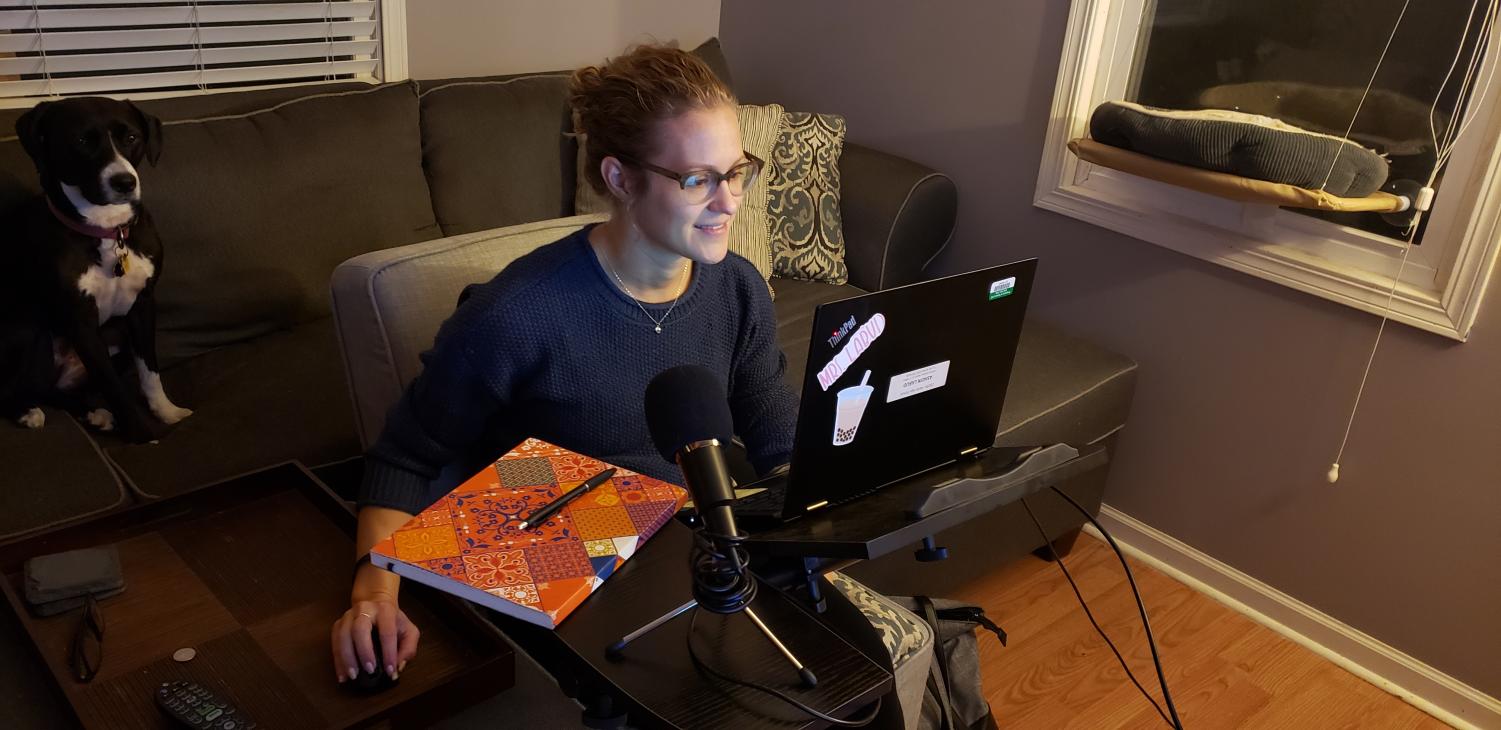Overcoming online: how fully remote teachers adjusted to hybrid learning
November 3, 2020
“I want to be in-person with my students and I know many of them are disappointed I won’t be in the classroom with them” Science teacher Megan Marrs said. “I love my job and working with students every day is the best part. While we can replicate that as best as we can in a virtual setting, it’s not the same.”
Right before the pandemic hit, Marrs was diagnosed with Myasthenia Gravis Disease, an autoimmune disorder that affects one’s ability to control muscles. Due to this, she was not able to return to school.
As the first two weeks of hybrid come to an end, students who chose to go to school have found their classes and met most, if not all, of their teachers.
On Nov. 2, District 99 announced the school’s plan to go back to the fully remote schedule for at least the next two weeks. Though the hybrid model was short-lived, it provided numerous challenges for teachers – specifically those staying remote due to health concerns. It is still unknown whether the hybrid schedule will be implemented again after the “Adaptive Pause”, as decisions are made largely on county COVID numbers.
Each in-person teacher was different with the way they chose to run their classroom when they were in school; some teachers made students stay on Zoom the whole time, others let them log off halfway through and some didn’t need to log on at all.
If a teacher was not able to go to school, their students would have to stay in Zoom the whole class period while in the classroom. There were a total of 17 teachers from DGN and 22 teachers from DGS that did not return to school. Those teachers were then assigned to a teacher’s assistant (TA) to moderate the students in class.
Assistant Superintendent for Staff Services Dr. Robert Lang explains the steps to allow teachers to teach from home.
“It is the district’s expectation that all employees report to work in person. If an employee submits a request to work remotely, our Human Resources department follows a rigorous verification process,” Lang said in an Omega email. “The employee must provide significant documentation to support the reason for the accommodation before they are granted permission to work remotely.”
Math teacher Ashlyn LaBud was one of the 17 teachers not returning and she plans to continue teaching her students correspondingly.
“I am teaching my students very similarly to how I have been teaching during the full remote time. Whether kids are in the school or at home, we will all be connecting virtually to learn and practice together,” LaBud said.
Along with LaBud, Marrs was also not able to go back to school due to her recent diagnosis.
“It was an extremely scary period of my life,” Marrs said. “The autoimmune disorder puts me at higher risk for COVID since my immune system isn’t working properly and the medications they use to treat the disorder suppress the immune system, which isn’t ideal during this pandemic.”
Marrs teaches two classes this year. One of them was taught the same way as before the hybrid schedule, with her being home and a TA in the room to assist students. Her other class, Chemistry 300 is co-taught and they took a different approach.
“My co-taught Chemistry 300 class is a little different in that I teach that class with another certified teacher who is going back to teaching in-person. Our plan is to divide up the class,” Marrs said. “My co-teacher will work with the students who are in-person so they can put away their Chromebooks and take a break from the screens. I will work with the students who are remote.”
Freshman Mary Kate Casey did choose to return to school for the hybrid model. She reflects on her outlook on her first freshman experience in school and ultimately explains that she enjoyed being surrounded by friendly faces even if she had to be on the computer.
“I wish that we were more interactive with the people around us instead of working with the people at home,” Casey said. “But I did like being around people instead of being by myself the entire day. It kind of felt the same at school and online just because we were doing the same things just with people around you.”
Junior Luke Tschosik has chosen to stay online this school year and doesn’t seem to have a problem with the way the teachers are choosing to manage their classrooms in-school or from home.
“There has not been a difference in my learning at home while students are at school mainly because my teachers have not changed anything by the way they teach other than looking around both the classroom and Zoom for questions,” Tschosik said.
Though LaBud cannot go back to school, she explains her urge to get to know her students more closely; a difficult task with either option.
“The biggest challenge with this school year is connecting with students on a personal level. Unfortunately, this is a challenge remotely or in the building” LaBud said.
Overall, Tschosik was pleased with staying online for school and knows that he made the right choice for himself even with some teachers staying at home.
“I am very happy with my choice of staying home because I feel like no matter where I am, as long as my teachers are doing a good job of explaining everything that my learning environment doesn’t matter,” Tschosik said. “I feel like my grades would be similar if not the same if I had attended school the entire time or if I had been at home the entire time.”
